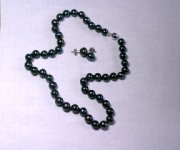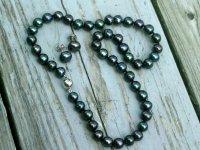N
National Pearl
Guest
Though we do not sell tahitians to our retail customers and sell very few (currently) Tahitian pieces (currently only pendants) to our online community, I found it interesting to hear that many Tahitian farmers are beginning to become quite concerned that their current dominance in producing round, multi-colored large pearls is being threatened by the common Chinese freshwater pearl. Because the Chinese are beginning to produce such beautifully round and colorful freshwater pearls, do others on this forum feel that the Tahitian pearl farmers have real reason to be concerned? Or do you feel there will always be a market for expensive Tahitian even if Chinese freshwater can eventually match them in size, color and roundness?


